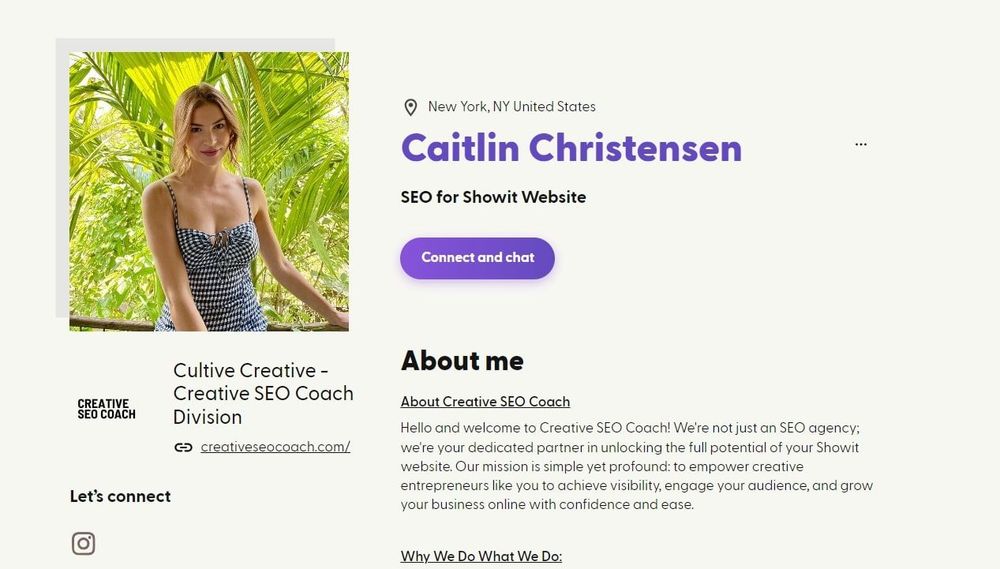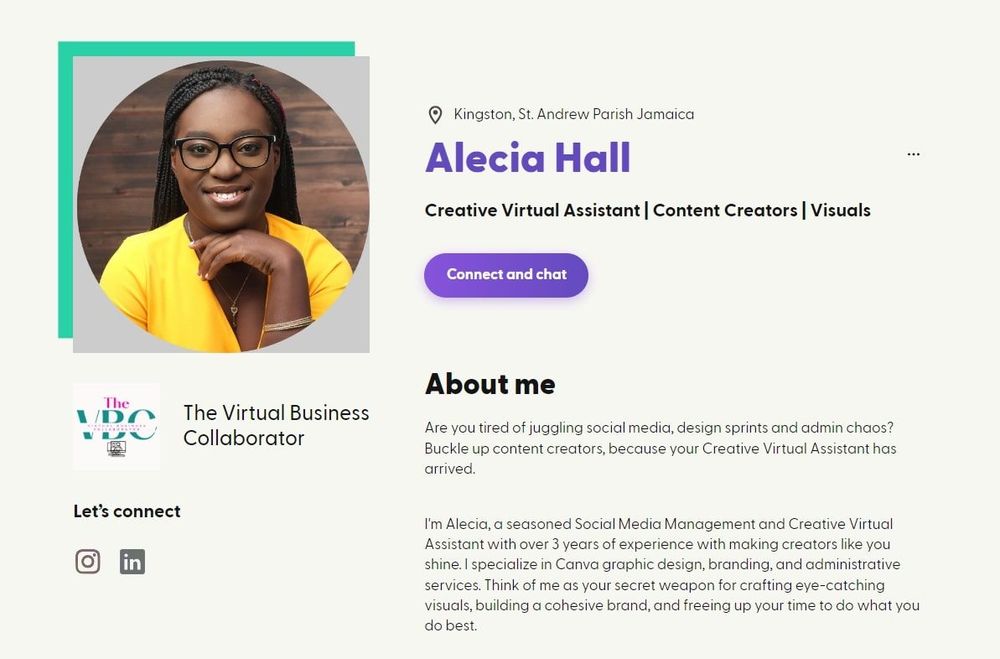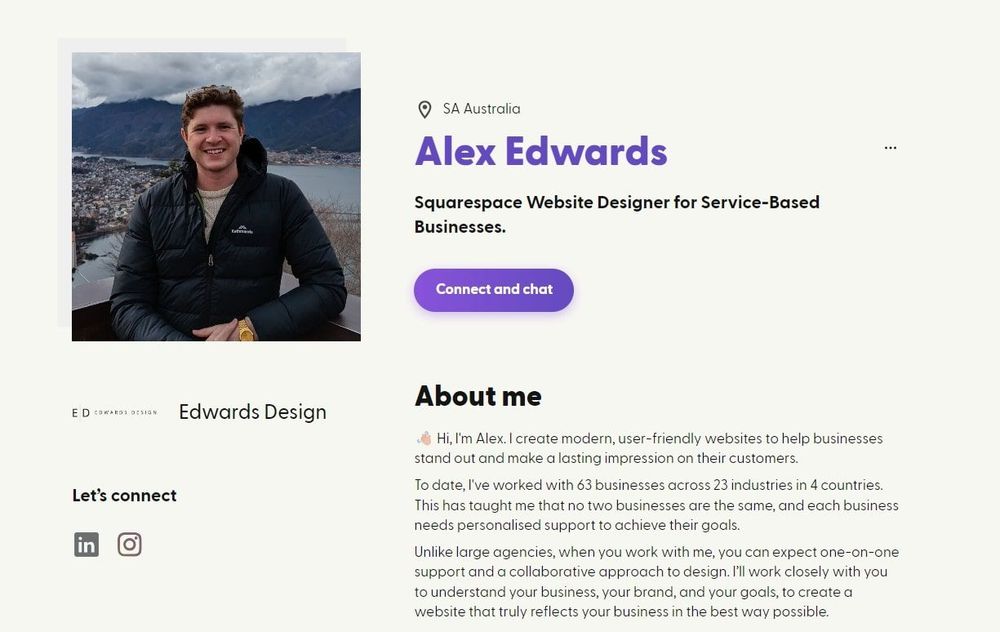If you've ever wondered how to showcase your work in a way that truly reflects your unique style and resonates with your audience, you're in the right place.
In this article, we're diving into the exciting world of User-Generated Content (UGC) portfolios and exploring not only what UGC means but also how to craft a portfolio that stands out from the crowd. Plus, we'll sprinkle in some inspiring portfolio examples to fuel your creative fire.
What Does UGC Mean?
First things first – let's demystify the acronym. UGC stands for User-Generated Content. But what exactly does that entail? In simple terms, it refers to the content created by you, as the creator, and shared with your audience.
It encompasses various forms of content, such as photos, videos, reviews, or testimonials, that showcase your creative work and engage your audience. UGC serves as a means for you to interact with your followers, inviting them to join you on your creative journey.
How to Create a UGC Portfolio
Creating a User-Generated Content (UGC) portfolio is an exciting endeavor that goes beyond compiling images or testimonials. It's about curating an immersive experience that showcases not only your artistic creations but also the unique perspectives and contributions of your audience.
Here's a comprehensive guide on how content creators can curate a portfolio that resonates with brands and captures the essence of their creative journey:
1. Define your purpose
Before diving into the technicalities, clarify the purpose of your UGC portfolio. Are you looking to build a community, demonstrate your versatility, or establish credibility with user testimonials? Understanding your goals will guide the structure and content of your portfolio.
2. Include an About Me section
Introduce yourself to brands by sharing your artistic journey, inspirations, and the stories behind your creations. Adding a personal touch humanizes your portfolio and strengthens the connection between you and potential brand partners.
3. Curate thoughtfully
Act as a curator, selecting content that not only reflects your artistic vision but also resonates with your audience and potential brand partners. Consider creating themed collections or highlighting diverse perspectives to keep your portfolio engaging.
4. Organize your content
Structure your portfolio in a way that tells a cohesive and visually appealing story. Group similar types of content together, and consider creating categories that highlight different aspects of your work. A well-organized portfolio enhances the user experience for brands exploring your content.
5. Incorporate multimedia elements
Embrace the diversity of user-generated content by including photos, videos, reviews, and interactive elements in your portfolio. This variety creates a rich and immersive experience that captures the attention of brands seeking collaborative opportunities.
6. Showcase the Journey
Offer brands insights into the process behind your creations by sharing behind-the-scenes glimpses, progress shots, and personal anecdotes. This adds depth and authenticity to your portfolio, allowing brands to connect with your creative process.
7. Optimize for mobile viewing
Ensure your UGC portfolio is optimized for mobile devices to accommodate brands accessing your content on smartphones and tablets. A responsive design improves accessibility and enhances the browsing experience for potential collaborators.
8. Pricing information
If applicable, provide transparency by including pricing information for your services or products. This helps brands understand your offerings and facilitates easier engagement with your work.
9. Include calls-to-action
Encourage brands to initiate collaborations by including calls-to-action within your portfolio. Invite them to reach out for partnership opportunities or to explore your content further. Active engagement fosters connections and opens doors for future collaborations.
10. Regularly update and refresh
Keep your UGC portfolio dynamic by regularly updating it with fresh content. Highlight new contributions, feature different collaborators, and celebrate milestones. An active and evolving portfolio maintains brands' interest and engagement over time.
3 Impressive UGC Portfolio Examples
While these portfolios may not fit the exact mold of UGC portfolios, they still serve as excellent sources of inspiration for crafting your own standout portfolio. After all, the principles of effective portfolio design and presentation transcend specific niches or formats.
Here are three portfolios that can ignite your creativity and guide you towards building a portfolio that truly shines:
1. Caitlin Christensen

What sets Caitlin's portfolio apart is her holistic approach – she's not just offering SEO services; she's positioning herself as a dedicated partner in her clients' online success journey. Through Creative SEO Coach, Caitlin showcases a deep understanding of the challenges creative entrepreneurs face in navigating the digital landscape and stands ready to empower them with tailored SEO strategies.
Her portfolio exudes confidence and reliability, with a clear emphasis on delivering results that go beyond mere rankings to truly reflect her clients' brand essence and connect with their target audience. What's particularly impressive is Caitlin's commitment to accessibility – from her beginner-friendly SEO course to her readiness to assist new businesses, she ensures that her expertise is accessible to all, regardless of prior experience.
2. Alecia Hall

Right from the get-go, Alecia's introduction captures her expertise and the value she brings to her clients, immediately establishing trust and credibility. By focusing on her specialization in Canva graphic design, branding, and administrative services, Alecia positions herself as a go-to resource for content creators seeking to elevate their online presence.
Furthermore, her portfolio is well-organized, providing clear sections for her services, portfolio pieces, professional development, and client testimonials. The inclusion of specific examples of her work, such as the Functional Canva VA Website, demonstrates her capabilities effectively. Additionally, Alecia's commitment to ongoing learning and self-improvement, as evidenced by her participation in courses and mentorship, showcases her dedication to excellence and continuous growth.
3. Alex Edwards

Alex's portfolio shines brightly for several reasons. Firstly, his introduction is warm and inviting, immediately establishing a personal connection with potential clients. By highlighting his extensive experience working with 63 businesses across 23 industries in 4 countries, Alex demonstrates his versatility and adaptability, assuring clients that their unique needs will be understood and met.
What sets Alex apart is his commitment to providing personalized support and a collaborative approach to web design, offering clients one-on-one attention and tailored solutions that align with their business goals and brand identity. His portfolio showcases a diverse range of projects, including a Squarespace website for a Tiny Home Builder, demonstrating his ability to create user-friendly and visually appealing websites across different industries.
How to Reach Out to Brands for Partnership Opportunities
Collaborating with brands can offer exciting opportunities to expand your reach, access new audiences, and unlock additional resources for your UGC portfolio.
Here are some effective strategies for reaching out to brands and initiating partnerships:
Research and targeting
Start by researching brands that align with your creative style, values, and target audience. Look for brands that share similar aesthetics, mission statements, or target demographics, as these are more likely to resonate with your community and enhance the authenticity of your partnership. Narrow down your list to a select few brands that you genuinely admire and believe would benefit from collaborating with you.
Understand their objectives
Before reaching out to a brand, take the time to understand their goals, priorities, and target audience. Explore their website, social media channels, and recent marketing campaigns to gain insights into their brand identity, values, and messaging.
By demonstrating a clear understanding of the brand's objectives and offering tailored partnership proposals that align with their strategic priorities, you increase the likelihood of securing meaningful collaborations.
Craft a compelling pitch
Personalize your outreach efforts by crafting a compelling pitch that highlights the unique value proposition of collaborating with you. Clearly articulate how your UGC portfolio can complement the brand's marketing efforts, drive engagement, and add authentic storytelling elements to their campaigns.
Emphasize the mutual benefits of the partnership, such as access to your loyal audience, creative expertise, or innovative content formats.
Highlight previous successes
Showcase examples of previous successful collaborations or relevant projects that demonstrate your ability to deliver results and create compelling content. Share case studies, testimonials, or metrics that illustrate the impact of your work and the value you can bring to potential brand partners. Highlight any notable achievements, accolades, or milestones that showcase your credibility and expertise in your niche.
Establish authentic connections
Foster genuine connections with brand representatives by engaging with their content, participating in relevant conversations, and building rapport over time.
Follow the brand on social media, interact with their posts, and comment thoughtfully to demonstrate your genuine interest and enthusiasm for their products or services. Building authentic relationships lays the foundation for meaningful partnerships based on trust, mutual respect, and shared goals.
Offer customized collaboration ideas
Tailor your partnership proposals to the specific needs and objectives of each brand you reach out to. Brainstorm creative collaboration ideas that leverage your strengths, expertise, and audience insights to deliver unique value propositions.
Whether it's co-creating exclusive content, hosting joint events or campaigns, or offering product integrations or endorsements, customize your proposals to showcase how you can help the brand achieve its goals in innovative ways.
Follow-up and persistence
After sending your initial outreach email or message, follow up with brands to ensure they received your proposal and express your continued interest in collaborating.
Be courteous, professional, and persistent in your follow-up communications, but avoid being overly pushy or aggressive. Give brands time to review your proposal and consider their options before following up at appropriate intervals to keep the conversation alive.
Negotiate terms and agreements
Once a brand expresses interest in collaborating with you, discuss and negotiate the terms and agreements of the partnership to ensure mutual understanding and alignment. Clarify expectations, responsibilities, timelines, and compensation arrangements upfront to avoid misunderstandings or conflicts later on.
Consider consulting legal or professional advisors to draft formal contracts or agreements that protect the interests of both parties and establish clear guidelines for the partnership.
How Can Indy Help?
Indy provides a cost-effective solution for hosting your portfolio – and the best part? It's completely free! Join the Indy Community to not only display your portfolio but also connect with fellow creatives worldwide. What's more, you'll gain access to a suite of essential tools to manage your UGC business seamlessly.
From creating invoices to organizing contracts, storing files, and tracking time, Indy has everything you need conveniently located in one place. Start exploring the possibilities today, all without spending a dime. Get started today for free!
A Quick Recap
And there you have it – a roadmap to crafting a UGC portfolio that not only showcases your creativity but also demonstrates the power of community collaboration. With these insights and practical tips in mind, it's time to transform your portfolio into a captivating showcase that captivates brands and fosters meaningful partnerships.
And why wait? Start building your UGC portfolio today and unlock the potential to attract brands by showcasing your unique voice and community engagement. With Indy's free tools for managing your UGC business, including proposals, contracts, and invoicing, you'll have everything you need to thrive in the world of content creation and brand collaborations. Get ready to turn your creativity into opportunities and your audience into brand allies. Get started today for free!
Frequently Asked Questions (FAQs)
What are organic social media posts?
Organic social media posts refer to content shared on social media platforms without paid promotion or advertising. These posts are typically created to engage with an audience, build brand awareness, and foster community interaction without relying on paid reach or sponsored placements.
How can UGC creators benefit from UGC brand deals?
UGC creators can benefit from UGC brand deals by collaborating with brands to create authentic and engaging content that resonates with their audience. These partnerships can provide opportunities for exposure, monetization, and professional development while allowing creators to leverage their creative skills and unique perspectives to promote brand messages in an organic and relatable manner.
What are some tips for UGC creators looking to create content for their professional portfolio?
Some tips for creators who are looking to create a good UGC portfolio include:
- Curating a diverse selection of high-quality work that showcases their creative skills and versatility.
- Providing context and background information for each piece of content to give viewers insight into the creative process and inspiration behind the work.
- Organizing their portfolio in a visually appealing and user-friendly manner to enhance the browsing experience for potential clients or collaborators.
- Updating their portfolio regularly with new content and accomplishments to reflect their ongoing growth and development as a creator.
How can UGC creators leverage social media platforms to reach a wider audience?
UGC creators can leverage social media platforms to reach a wider audience by:
- Sharing their UGC content consistently and strategically to maximize visibility and engagement.
- Utilizing relevant hashtags, tagging brands or influencers, and participating in trending topics or challenges to increase discoverability and reach.
- Engaging with their audience through comments, direct messages, and interactive features to foster community interaction and build relationships.
- Collaborating with other creators or brands to cross-promote content and expand their reach to new audiences.
What are some common challenges faced by UGC creators?
Some common challenges faced by UGC creators include:
- Balancing creative expression with brand guidelines or client expectations in sponsored collaborations or brand partnerships.
- Dealing with copyright issues or legal considerations related to using third-party content or incorporating copyrighted material into their work.
- Managing time and resources effectively to consistently create high-quality content while juggling other responsibilities or commitments.
- Navigating algorithm changes and evolving trends on social media platforms to maintain visibility and engagement with their audience.
How can a UGC creator monetize their content?
UGC creators can monetize their content through various channels, including:
- Sponsored collaborations with brands or advertisers to create branded content or promote products or services.
- Selling merchandise or digital products such as prints, ebooks, or online courses related to their niche or expertise.
- Participating in affiliate marketing programs to earn commissions from promoting products or services through affiliate links.
- Offering premium content or subscription-based memberships to access exclusive content, features, or perks.
- Crowdfunding platforms or donations from their audience to support their creative endeavors and fund future projects.



